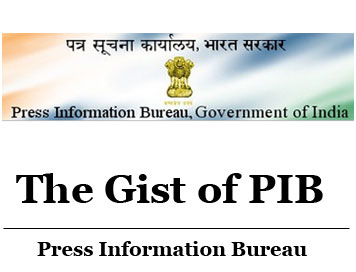(HOT) UPSC Current Affairs 2025 PDF
NEW! The Gist (NOV-2025) | E-BOOKS
(THE GIST OF PIB) Coalition for Disaster Resilient Infrastructure (CDRI)

(THE GIST OF PIB) Coalition for Disaster Resilient Infrastructure (CDRI)
(MARCH-2024)
Coalition for Disaster Resilient Infrastructure (CDRI)
-
ISRO Chairman S Somanath informed recently that it may take up to two years for the completion of the construction at the site.
Key details
-
The new facility could permit anywhere between 20 to 30 SSLV launches, annually.
-
Recently, Prime Minister laid the foundation stone of Indian Space Research Organization’s (ISRO) second rocket launchport in Kulasekarapattinam.
-
The facility, which costs Rs 986 crore, is located in the Thoothukudi district of coastal Tamil Nadu at a strategically excellent location. In the future, it will be widely and solely utilized for small-scale, on-demand, commercial satellite launches.
Need of new launchport:
-
Increased Launch Traffic: With India’s space sector now welcoming private companies, a significant increase in commercial launches is anticipated. To manage this growing volume of activity, building a new launchpad becomes essential.
-
Sharing the Load: ISRO’s current launch complex, The Satish Dhawan Space Centre (SDSC) at Sriharikota Range (SHAR), could become overloaded if it’s expected to handle both large-scale missions and smaller satellite launches. A new facility dedicated to smaller payloads would help distribute the workload and ensure efficient operations.
-
Encourages private investment, fostering innovation and competition in the space sector.
India’s Journey of SSLV
-
Recently, the Prime Minister of India addressed the 6th edition of International Conference on Disaster Resilient Infrastructure (ICDRI) organized by CDRI.
About Coalition for Disaster Resilient Infrastructure:
-
It is a multi-stakeholder global partnership of national governments, UN agencies and programmes, multilateral development banks and financing mechanisms, the private sector and academic and knowledge institutions.
-
It addresses the challenges of building resilience into infrastructure systems and development associated with it.
-
It was launched during the United Nations Climate Action Summit in 2019, at New York.
Objective:
-
It aims to promote the resilience of infrastructure systems to climate and disaster risks, thereby ensuring sustainable development.
-
It seeks to rapidly expand the development and retrofit of resilient infrastructure to respond to the Sustainable Development Goals imperatives of expanding universal access to basic services, enabling prosperity and decent work.
-
It functions as inclusive multi-stakeholder platform led and managed by national governments, where knowledge is generated and exchanged on different aspects of disaster resilience of infrastructure.
-
It brings together a multitude of stakeholders to create a mechanism to assist countries to upgrade their capacities, systems, standards, regulations and practices with regard to infrastructure development in accordance with their risk context and economic needs.
CLICK HERE TO DOWNLOAD FULL PDF
CLICK HERE TO DOWNLOAD UPSC E-BOOKS
Study Material for UPSC General Studies Pre Cum Mains
Get The Gist 1 Year Subscription Online
Click Here to Download More Free Sample Material
<<Go Back To Main Page
Courtesy: PIB


